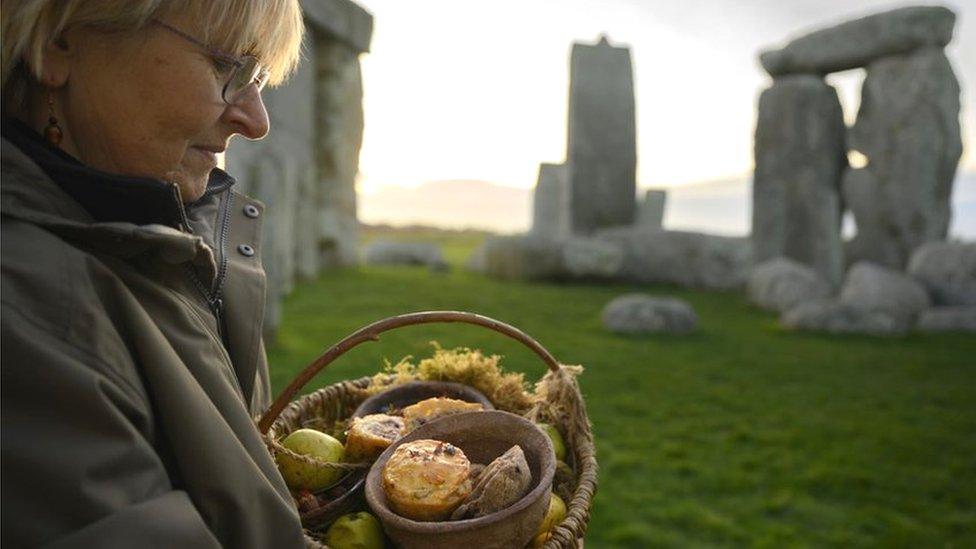Stonehenge Neolithic builders 'feasted' on raw cow guts
- Published
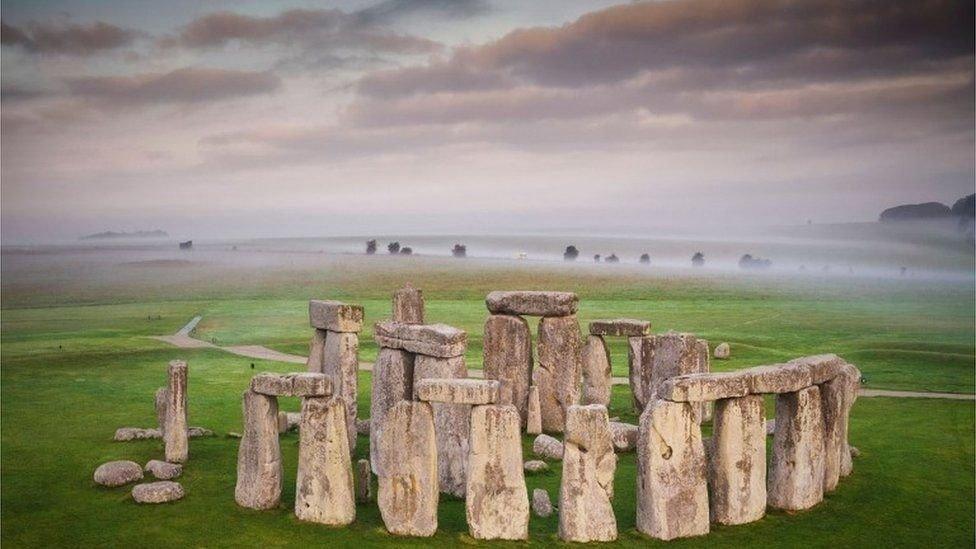
The tribes that built the monument "feasted" on raw or partially-cooked cow organs, scientists now believe
The prehistoric tribes that built Stonehenge likely "feasted" on the raw organs of cattle, scientists believe.
Analysis of human faeces found at a prehistoric village near the Wiltshire monument has uncovered evidence of parasitic worm eggs.
The study said that indicates they had eaten the raw or undercooked lungs or livers from an infected animal.
Lead author Piers Mitchell said the parasites fitted with "winter feasting" during the building of Stonehenge.
Dr Mitchell, who headed the University of Cambridge-led study, examined 19 pieces of ancient faeces, or coprolite, at Durrington Walls - a Neolithic settlement about two miles from the World Heritage site.
'Winter feasting'
They dated from about 2500 BC when much of the famous site was constructed.
A study found that five of the coprolites - one human and four dog - contained the eggs of parasitic worms.
It is the earliest evidence for intestinal parasites in the UK where the host species that produced the faeces has also been identified.
Four of the coprolites, including the human one, contained the eggs of capillariid worms.
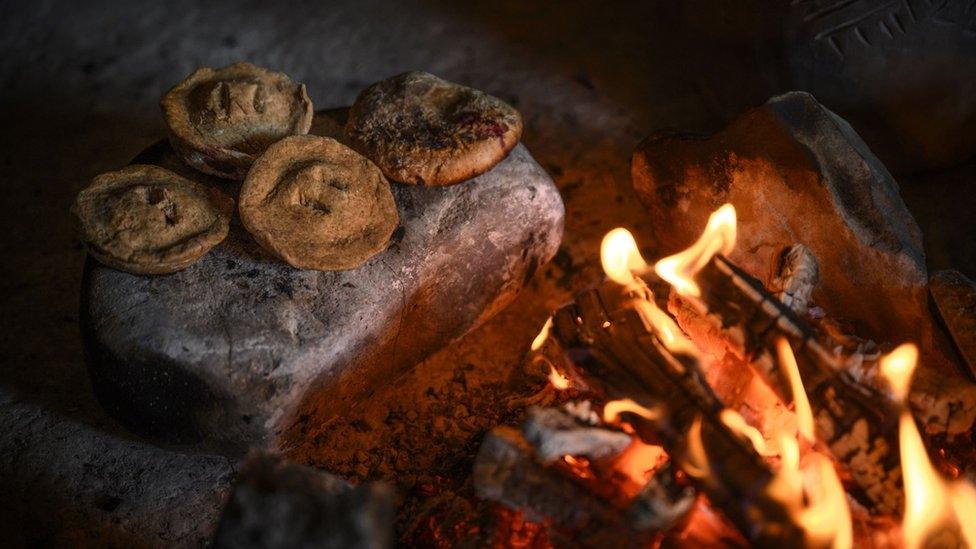
Previous excavations have revealed the builders of Stonehenge enjoyed sweet treats too, including foraged fruit and nuts
The scientists said evidence of them in human faeces indicate the person had eaten the raw or undercooked lungs or liver from an already infected animal, resulting in the parasite's eggs passing straight through the body.
Co-author Evilena Anastasiou said the presence of the worms in both human and dog coprolites indicated "that the people had been eating the internal organs of infected animals, and also fed the leftovers to their dogs".
Prof Mike Parker Pearson, from UCL's Institute of Archaeology, who excavated Durrington Walls between 2005 and 2007, said that new evidence "tells us something new about the people who came here for winter feasts during the construction of Stonehenge".
"Pork and beef were spit-roasted or boiled in clay pots but it looks as if the offal wasn't always so well cooked," he added.
"The population weren't eating freshwater fish at Durrington Walls, so they must have picked up the tapeworms at their home settlements."
Previous excavations suggested the builders of Stonehenge supplemented their diet with sloes, hazelnuts and crab apples too.

Follow BBC West on Facebook, external, Twitter, external and Instagram, external. Send your story ideas to: bristol@bbc.co.uk , external
- Published29 April 2022
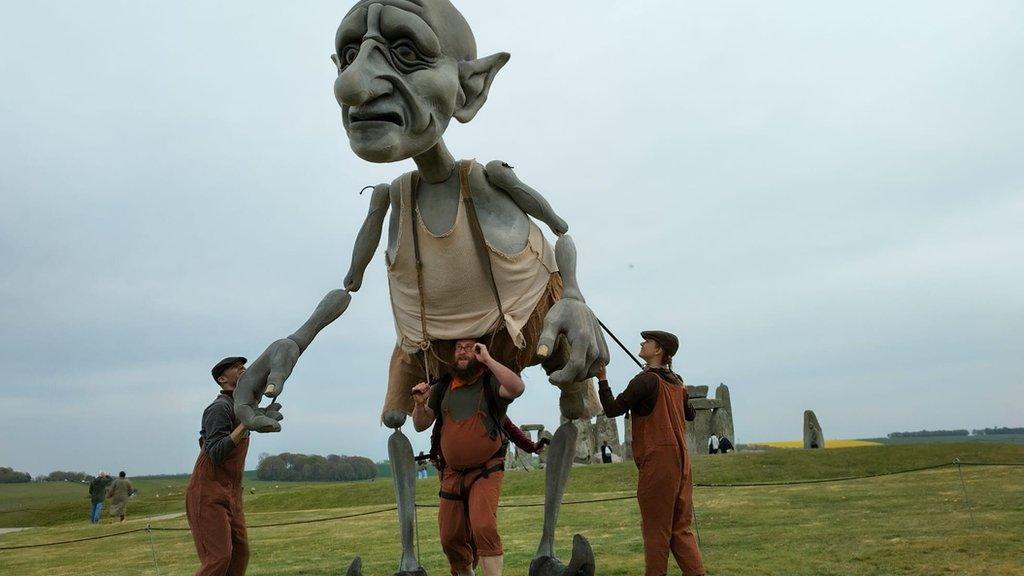
- Published28 April 2022

- Published11 May 2022
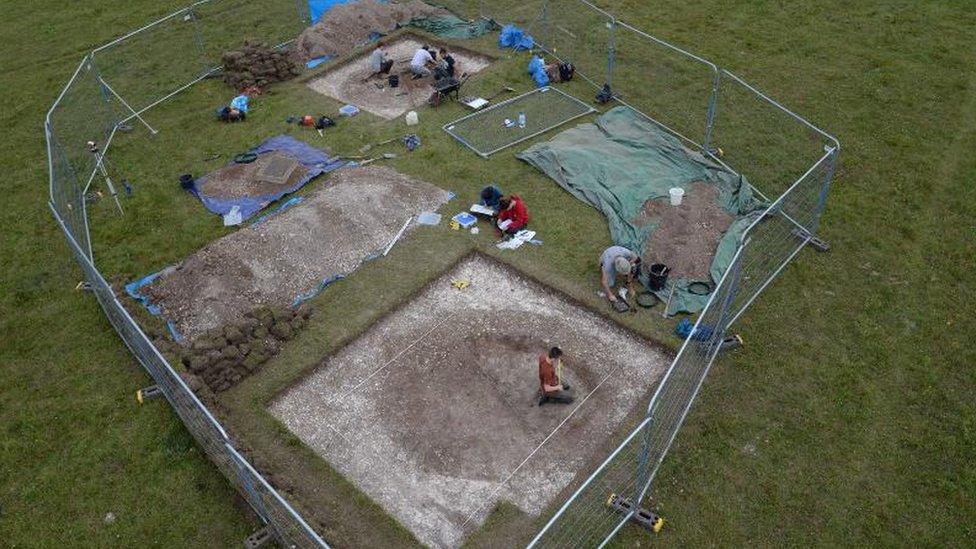
- Published1 December 2021
